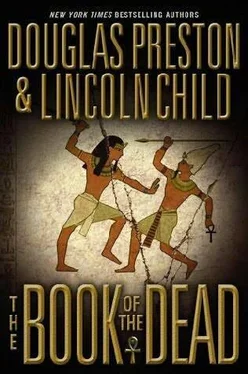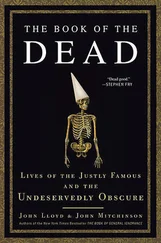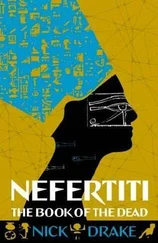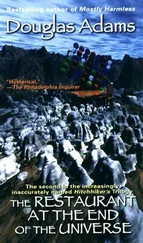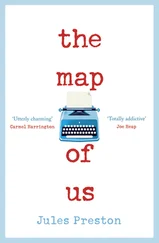“And you’ll have it,” DeMeo said. “We got a complete Dolby Surround and Pro Logic II sound system and four Chauvet Mega II 750-watt strobes, along with a bunch of spots. All controlled by a twenty-four-channel DMX lighting console, fully automated.”
He looked around proudly, as if he knew what the hell he was talking about instead of, once again, quoting verbatim from Lipper’s carefully designed specs. God, Lipper couldn’t stand him. He waited a moment before resuming.
“After the light and thunder, the holographic projectors will switch back on, and we’ll see Senef himself rise from the sarcophagus. The priests will fall back, terrified. This is all meant to be in their minds, what they imagine, as was written in the script.”
“But it will be realistic?” Nora asked, frowning. “Not hokey?”
“It’ll all be 3-D, and the holographic images are a bit like ghosts-you can see through them, but only when there’s strong light behind. We’ll manipulate the light levels very carefully to exploit that illusion. Some of it’s video-based, some of it C.G. Anyway, Senef rises, violated, and points a finger. To more flashes of lightning and thunder, he speaks of his life, what he has done, what a great regent and vizier he was to Thutmosis, and of course, this is where you slip in the educational stuff.”
“Meanwhile,” said DeMeo, “we’ve got a 500-watt Jem Glaciator hidden in the sarcophagus, pumping out an awesome ground fog. Two thousand cubic feet a minute.”
“My script doesn’t call for artificial smoke,” said Wicherly. “This could damage the paintings.”
“The Jem system uses only environmentally friendly fluids,” Lipper said. “Guaranteed not to chemically alter anything.”
Nora Kelly was frowning again. “Forgive me for raising this question, but is this level of theatricality really necessary?”
Menzies turned to her. “Why, Nora! This was your idea to begin with.”
“I was imagining something lower-key, not strobe lights and fog machines.”
Menzies chuckled. “As long as we’re going this route, Nora, we should do it right. Trust me, we’re creating an unforgettable educational experience. It’s a marvelous way to slip a little learning to the vulgus mobile without them ever realizing it.”
Nora continued to look doubtful, but said nothing further.
Lipper resumed. “As Senef speaks, the robbers fall to the floor in terror. Then Senef melts back into his sarcophagus, the robbers vanish, the holographic screens retract, the lights come up-and suddenly the tomb is as it was, before the robbery. A museum exhibit once again. The gate slides back and the visitors are free to tour the burial chamber as if nothing had happened.”
Menzies raised a finger. “But they will do so having gained an appreciation of Senef and been entertained in the process. Now for the million-dollar question: can you finish by deadline?”
“We’ve already outsourced as much of the programming as possible,” Lipper said. “The electrical staff are working flat out. I’d say we can have it installed and ready for alpha testing in four days.”
“That’s excellent.”
“And then comes the debugging.”
Menzies cocked his head questioningly. “Debugging?”
“That’s the killer. A rule of thumb says the debugging takes twice as long as the original programming.”
“Eight days?”
Lipper nodded, uneasy from the sudden darkening of Menzies’s face.
“Four plus eight is twelve-two days before the gala opening. Can you finish the debugging in five?”
Something in Menzies’s tone led Lipper to think it was more an order than a question. He swallowed: the schedule already verged on the insane. “We’ll certainly try.”
“Good. Now, let’s talk for a minute about the opening. Dr. Kelly suggested we duplicate the original opening in 1872, and I wholeheartedly concurred. We are planning a cocktail reception, a bit of opera, and then the guests will be escorted into the tomb for the sound-and-light show. Dinner will follow.”
“How many are we talking about?” Lipper asked.
“Six hundred.”
“Obviously we’re not going to fit six hundred people into the tomb at one time,” Lipper said. “I’ve been estimating two hundred at a go for the sound-and-light show, which lasts about twenty minutes, but we could up that to, say, three hundred for the opening.”
“Fine,” said Menzies. “We’ll divide them into two groups. The first in, of course, will be the A-list: the mayor, governor, senators and congressmen, the museum’s top brass, the biggest patrons, movie stars. With two showings, we’ll get guests through the exhibit within an hour. Finish off the entire crowd.” He looked from Lipper to DeMeo. “You two are crucial. There can’t be any mistakes. Everything’s riding on you finishing that sound-and-light show on time. Four days plus five: that’s nine days.”
“I’ve got no problem,” said DeMeo, all smiles and self-confidence: gofer and cable-puller extraordinaire.
Those disquieting blue eyes now turned back to Lipper. “And you, Mr. Lipper?”
“It’ll happen.”
“Delighted to hear it. I trust you’ll keep me up-to-date with progress reports?”
They nodded.
Menzies glanced at his watch. “Nora, if you’ll excuse me, I have to catch a train. I’ll check in with you later.”
Menzies and the curators were gone, leaving Lipper alone with DeMeo once again. He glanced at his watch. “We’d better get going, DeMeo, because I’d like to get to sleep tonight before four A.M. for a change.”
“What about Darkmord?” DeMeo asked. “You promised to have the band of warriors ready for the attack by midnight.”
Lipper groaned. Shit. They would just have to launch the attack on Castle Gloaming without him.
When Margo Green awoke, a bright afternoon sun was slanting in through the windows of the Feversham Clinic. Outside, puffy cumulus clouds drifted across a lazy blue sky. The distant call of waterbirds came from the direction of the Hudson River.
She yawned, stretched, then sat up in bed. Glancing at the clock, she noticed it was quarter to four. The nurse should be in soon with her afternoon cup of peppermint tea.
The hospital table beside her bed was crowded: back issues of Natural History, a Tolstoy novel, a portable music player, a laptop, and a copy of the New York Times. She reached for the newspaper, flipped through the C section. Maybe she could finish the crossword before Phyllis brought her tea.
Now that her condition was no longer critical, recovery at the clinic had settled into a kind of routine. She found that she looked forward to the afternoon chats with Phyllis. She hardly had any visitors-no visitors at all, actually, save her mother and Captain Laura Hayward-and the thing she missed most, other than her career, was companionship.
Picking up a pencil, she applied herself to the crossword. But it was one of those late-in-the-week puzzles, full of coy clues and obscure references, and mental exercise still tired her. After a few minutes, she put it aside. She found her thoughts straying back to Hayward ’s recent visit and the unpleasant memories it had reawakened.
It disturbed her that her memory of the attack remained shadowy. There were bits and pieces, disconnected, as if from a nightmare-but nothing coherent. She’d been inside the Sacred Images exhibition, checking the arrangement of some Native American masks. While there, she’d become aware of a presence: somebody else in the exhibition, lurking in the shadows. Following her. Stalking her. Cornering her. She dimly remembered making a stand, fighting with a box cutter. Had she wounded her pursuer? The actual attack itself was the most fragmentary: little more than a searing pain in her back. And that had been all-until she woke up in this room.
Читать дальше
